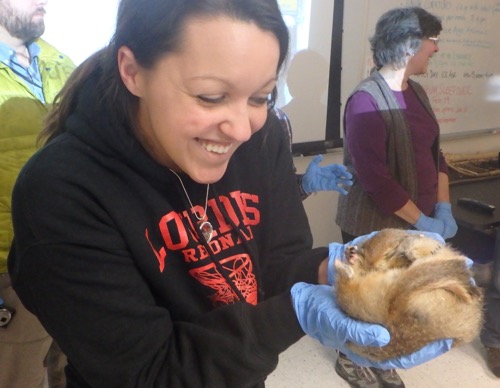Field Trip Time
Every day of PolarTREC orientation has been a new adventure (from re-learning how to use a Mac to awesome field trips to learn about current arctic research). On Tuesday, we took a ride to the University of Alaska, Fairbanks with arctic ground squirrels in mind. The UAF campus was stunning, covered in snow, lodge-like residential buildings dotting the lower section. The university buildings loomed above with their modern architecture and white finish which caught the setting arctic sun at just the right angle for a beautiful scene.
After digesting the beauty of the campus, it was time to get down to business--we were here to learn about an ongoing research project focused on arctic ground squirrels led by Dr. Jeanette Moore of the University of Alaska. Dr. Moore and her graduate students focus their work at Alaska's Toolik Research Station. Studying the behavior of arctic ground squirrels year round, they are looking at the circadian rhythms apparently present in Arctic ground squirrels during the active season, when daylight is 24/7 and the hibernation period in the continuous darkness. The investigation is focused to learn about how the circadian rhythm during both periods might relate to a reduction of energy expenditure during hibernation.
One of the most interesting pieces for me, an outsider to the field of biology, was the entire hibernation process. Arctic ground squirrels can reduce their temperature to -2 degrees Celsius during hibernation and exhibit absolutely no brain activity. Based on Dr. Moore's data, the first thing that happens before hibernation is a decrease in metabolism to extremely low levels. The temperature decrease follows, although every 24 hours a rise in temperature is observed. The cycle continues for 6 to 8 months, with males waking up from hibernation first. We had the opportunity as guests of Dr. Moore to meet one of her Arctic Ground Squirrels observed in the lab. This squirrel was deep in hibernation when we met her and you'll notice in the photo below that she is one adorable contribution to science. As we took turns holding her, her body temperature slowly rose and she began to wake up from deep hibernation. I look forward to following Dr. Moore's work and learning more about the findings of the behaviors of the arctic ground squirrel.



Comments